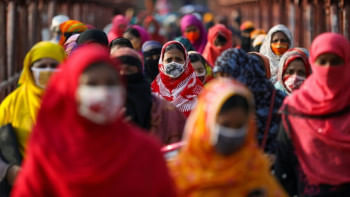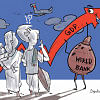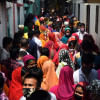Takeaways from Bangladesh’s latest human development indicators

The 2025 Human Development Report titled "A Matter of Choice: People and Possibilities in the Age of AI" is out. In addition to its substantive content, the report has ranked 193 countries and territories in terms of the Human Development Index (HDI), using 2023 internationally comparable data. The HDI is a composite measure of life expectancy at birth, educational attainment comprising mean and expected years of schooling, and per capita income in purchasing power parity dollars. In this year's global HDI ranking, Iceland has replaced Switzerland as the top country in the HDI league. Meanwhile, Somalia has jumped above South Sudan, pushing the latter to the bottom of the league. In fact, in the HDI ranking, the top and bottom five countries have remained the same, even though they have interchanged places.
Three observations are pertinent to the report and the index. First, like any other concept and its relevant measure, the notion of human development is broader than the index, which does not capture the totality or richness of the concept of human development. Second, the HDI embraces some basic dimensions of human development—e.g. a long and healthy life, knowledge, and standard of living—but not broader aspects such as participation, human security, and environmental sustainability. Third, the journalistic obsession and political interest in the report lie in the ranking of countries. In the process, the richness of its content and policy options is often overlooked. In that context, it should be made clear that the preoccupation with the HDI ranking can lead to misleading conclusions. For example, the HDI ranking of a country may go down despite increases in its HDI value, either because another country's HDI value has increased more, or because more countries are included in the HDI league. Therefore, it should not lead to the conclusion that the country whose HDI ranking has gone down is doing badly in human development.
In Bangladesh too, the hype is all about our HDI ranking. Bangladesh's HDI value in this year's report is 0.685. It was 0.680 in last year's report. Over the past 35 years, the HDI value of Bangladesh has gone up by 72 percent. Yet, the HDI discussions in the country hover around whether Bangladesh's ranking has moved up or down and how it compares to those of our neighbours. Similarly, the focus of the current discourse is that the HDI ranking of Bangladesh has dropped from 129 last year to 130 this year; in the regional context, the HDI rankings of Sri Lanka and the Maldives are well ahead of that of Bangladesh, etc.
In my view, the HDI discussion in Bangladesh should focus on some fundamental issues with policy implications. First of all, in 2021, the value of the inequality-adjusted HDI for Bangladesh was 23 percent less than the normal HDI. In two years, that difference has become 30 percent. This means that inequalities in human development outcomes are widening, consequently eating up the gains in human development. Furthermore, the inequalities in human development outcomes may originate from inequalities in human development opportunities, the root causes of which must be explored to address them through policies and strategies.
Second, like the notion of a "middle-income trap," Bangladesh also seems to be stuck in a "medium human development trap" for more than a decade, even though its HDI value has improved. The question is: what is holding us back? When we look at the components, we find that there has been a gain of two years in life expectancy since 2021, the expected years of schooling have marginally improved, but there has been a decrease in mean years of schooling and not enough increase in per capita income. So, the policy priority to push Bangladesh into high human development should focus, among other things, on how average years of schooling can be improved and how economic growth can be accelerated. Let us also have a look at Sri Lanka. Because of its long-term human development achievements, Sri Lanka has been in the high human development category for quite some time. Although Sri Lanka experienced economic, political, and social turmoil in 2022, the country could steer through the challenges and impediments, increase its life expectancy by two years, maintain its per capita income, and contain the slide in its HDI value to only 0.006—from 0.782 in 2021 to 0.776 in 2023. As we move forward, what can we learn from Sri Lanka, given the socio-economic changes in Bangladesh over the past year?
Third, India has now caught up with the HDI value of Bangladesh. In 2021, the HDI value of Bangladesh was 0.641 and that of India was 0.633. Two years later, in 2023, both countries have achieved an HDI value of 0.685. As a result, the two countries' 2021 HDI ranking gap (Bangladesh 129 and India 132) has been closed, and both countries now share an HDI ranking of 130. India closed the HDI value gap with Bangladesh because of a gain of five years in life expectancy (from 67 years in 2021 to 72 years in 2023) and by increasing its expected years of schooling from 12 to 13 years. It would be worthwhile to assess how India has improved its human development outcomes.
Fourth, the data reported in the global Human Development Report are internationally comparable data that come from standardising national data—the mother of all global data. If national statistical authorities in different countries strengthen their processes of reliable and robust data collection and make them available to respective UN agencies mandated to collect different types of human development data, the data reported in the global Human Development Report will be greatly improved. National policies should be geared to this effort.
Fifth, looking at the Gender Development Index (GDI), which is a ratio of female to male HDI, the disparities between female and male human development outcomes in Bangladesh are obvious. To start with, while the male HDI value is 0.708, the female HDI is 0.650. Because of a biological edge, female life expectancy at 76 years is higher than male life expectancy at 73 years. Other than that, women in Bangladesh are at a disadvantageous position vis-à-vis mean years of schooling and per capita income. The female mean years of schooling at 6.2 years is less than the 7.3 years for men. Women's per capita income is half that of men. Only in expected years of schooling are women, with 12.4 years, ahead of men at 11.9 years. All this begs the question: what policies need to be pursued to reduce gender disparities in human development outcomes?
As Bangladesh moves forward, there will be domestic and global economic challenges with implications for human development. On the domestic front, economic sluggishness, high inflation and unemployment, and volatilities in the banking and external sectors will pose challenges to human development. On the global front, the issue of Bangladesh's LDC graduation, the global tariff war, and conflicts in different parts of the world will affect the human development situation in Bangladesh.
Human resources are the greatest asset of Bangladesh. Therefore, the development of the country critically hinges on the human development of its people. It requires identification of the obstacles to human development, analysis of the challenges, and formulation of strategies to overcome them. We can try to fix the country's economic structure, work towards its macroeconomic stability, and undertake infrastructural development, but in the ultimate analysis, we have to prioritise human development in Bangladesh, as there is no other alternative.
Selim Jahan is former director of the Human Development Report Office under the United Nations Development Programme (UNDP) and lead author of the Human Development Report.
Views expressed in this article are the author's own.
Follow The Daily Star Opinion on Facebook for the latest opinions, commentaries and analyses by experts and professionals. To contribute your article or letter to The Daily Star Opinion, see our guidelines for submission.


 For all latest news, follow The Daily Star's Google News channel.
For all latest news, follow The Daily Star's Google News channel. 










Comments